This Is How You Can Watch Growth Of Your Website Traffic

Watching your website traffic growth is a great way to analyse the effectiveness of your online marketing campaign and website’s presence. We will help you by providing the tools to track and analyse your visitors and discover who they are.
What is website traffic?
Website traffic can be described as the number of visitors to your website from a search engine, referring site or someone else who knows about you but does not actually contact you. If a potential customer sees your company on the Internet and clicks to visit your site, that’s considered organic traffic.
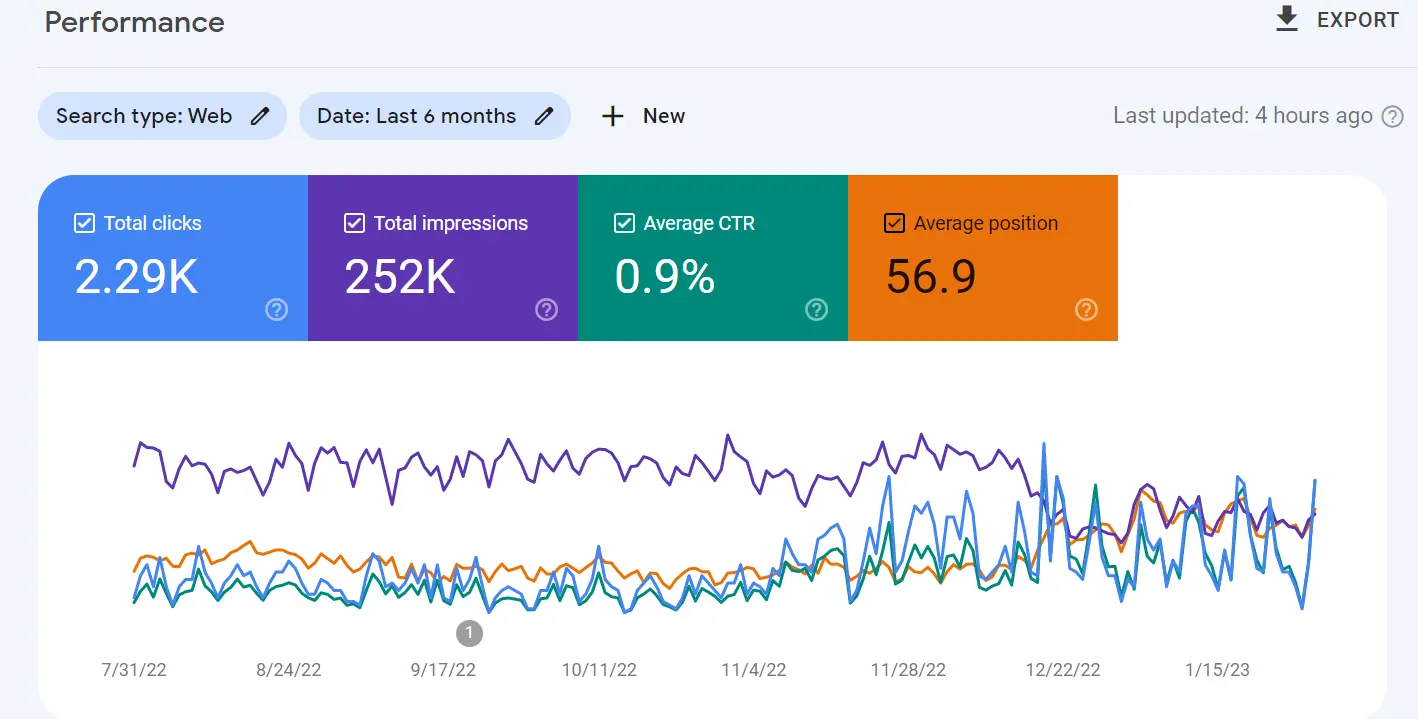
Website traffic is one of the most important factors for your success as a business. With the right strategy and execution, you can maximise your website traffic growth and drive more revenue
The thing which affects every single person’s search traffic, is what types of keywords you are using and how relevant those keywords are to your business.
Types of website traffic
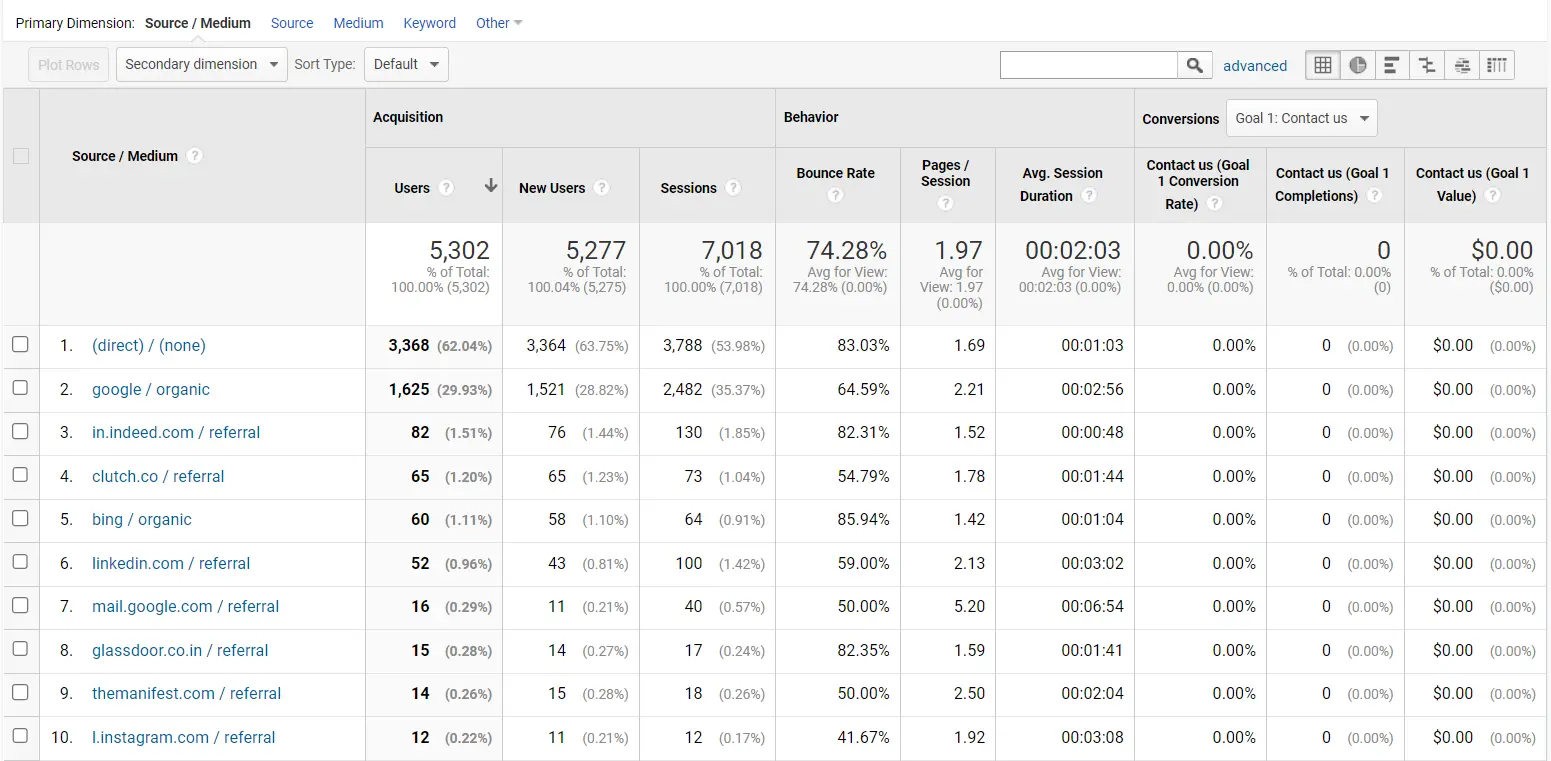
1. Organic traffic
Organic traffic refers to the visitors who come to a website from search engines, such as Google, Bing, or Yahoo, through unpaid search results.
- It means they are directed to something other than the site through paid advertising.
- The visitors found the site through a search query on the search engine.
- Organic traffic is essential for measuring a website’s performance and SEO efforts.
- Organic traffic can help assess the effectiveness of search engine optimization and the website’s visibility on search engines.
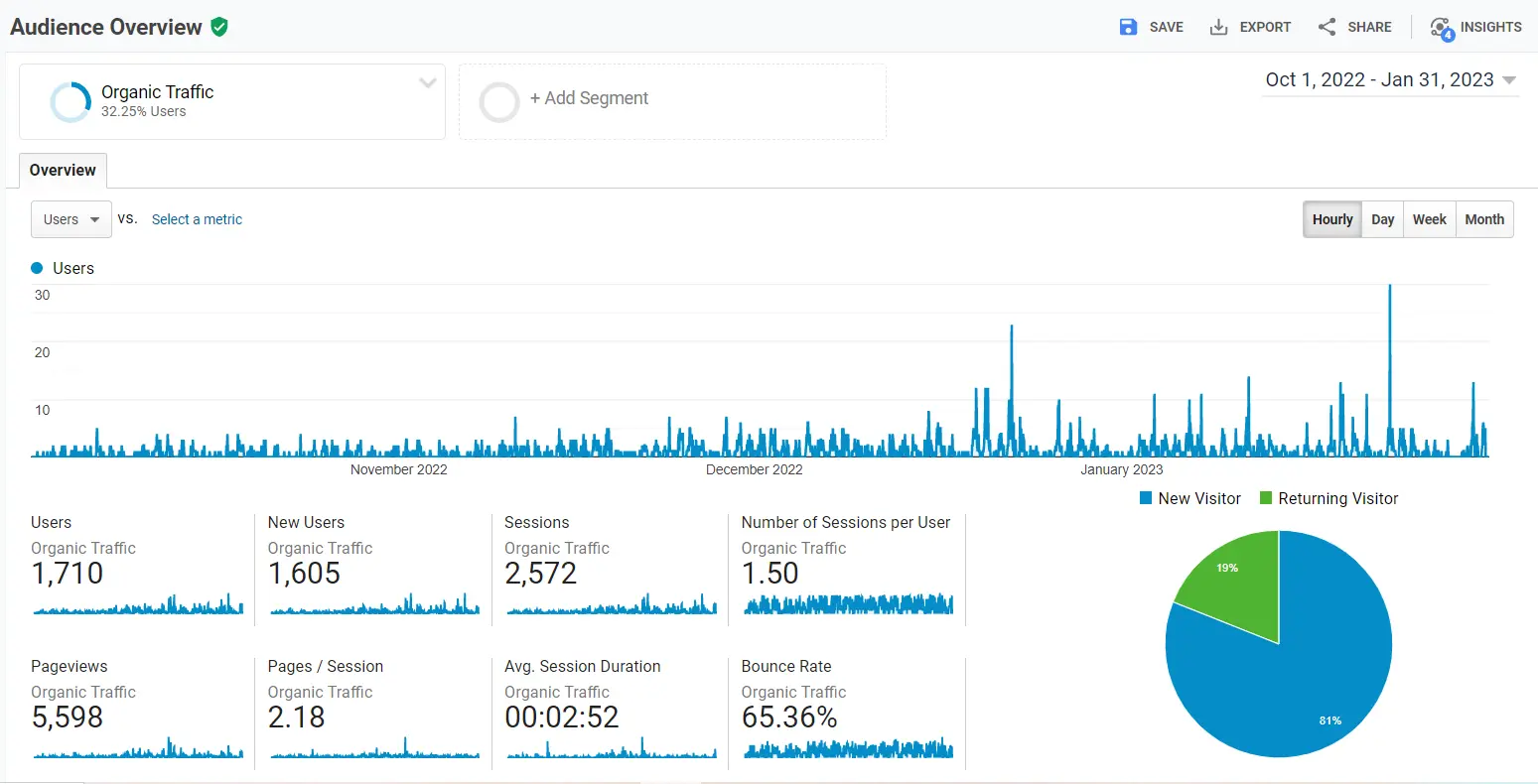
2. Paid traffic
Paid traffic refers to visitors directed to a website through paid advertising.
The advertising can be pay-per-click (PPC), display, social media ads, etc.
- The website owner pays the advertising platform (such as Google AdWords, Facebook Ads, etc.) to show their ads to a specific audience.
- Paid traffic can quickly drive traffic to a website, but it requires continuous investment to maintain.
- It can complement organic traffic and provide additional exposure for a website.
- The success of a paid traffic campaign depends on factors such as targeting, ad copy, and landing page experience.
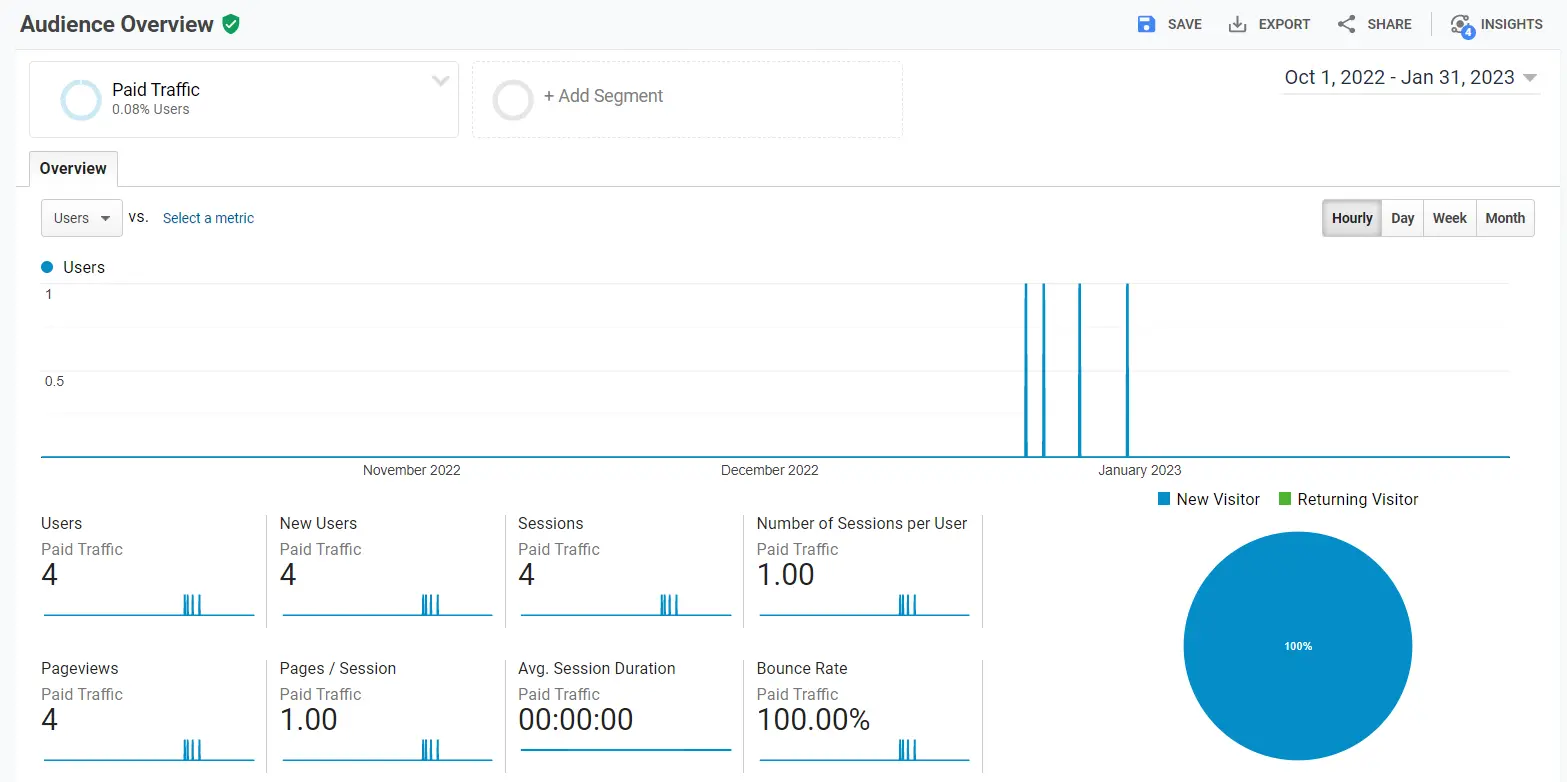
3. Direct traffic
The visitors who come to a website by typing the URL directly into the browser or by clicking on a bookmark they have saved are referred to as Direct traffic.
- They have not been directed to the site through a search engine or any other referral source.
- It can indicate that the visitor has a strong relationship with the website or is familiar with it.
- The website traffic generated from direct traffic can also result from an untagged URL or a missing referral source in analytics tracking.
- It serves as a baseline for evaluating the effectiveness of other traffic sources, such as organic or paid.
- Direct traffic can provide valuable insights into a website’s branding and customer loyalty.
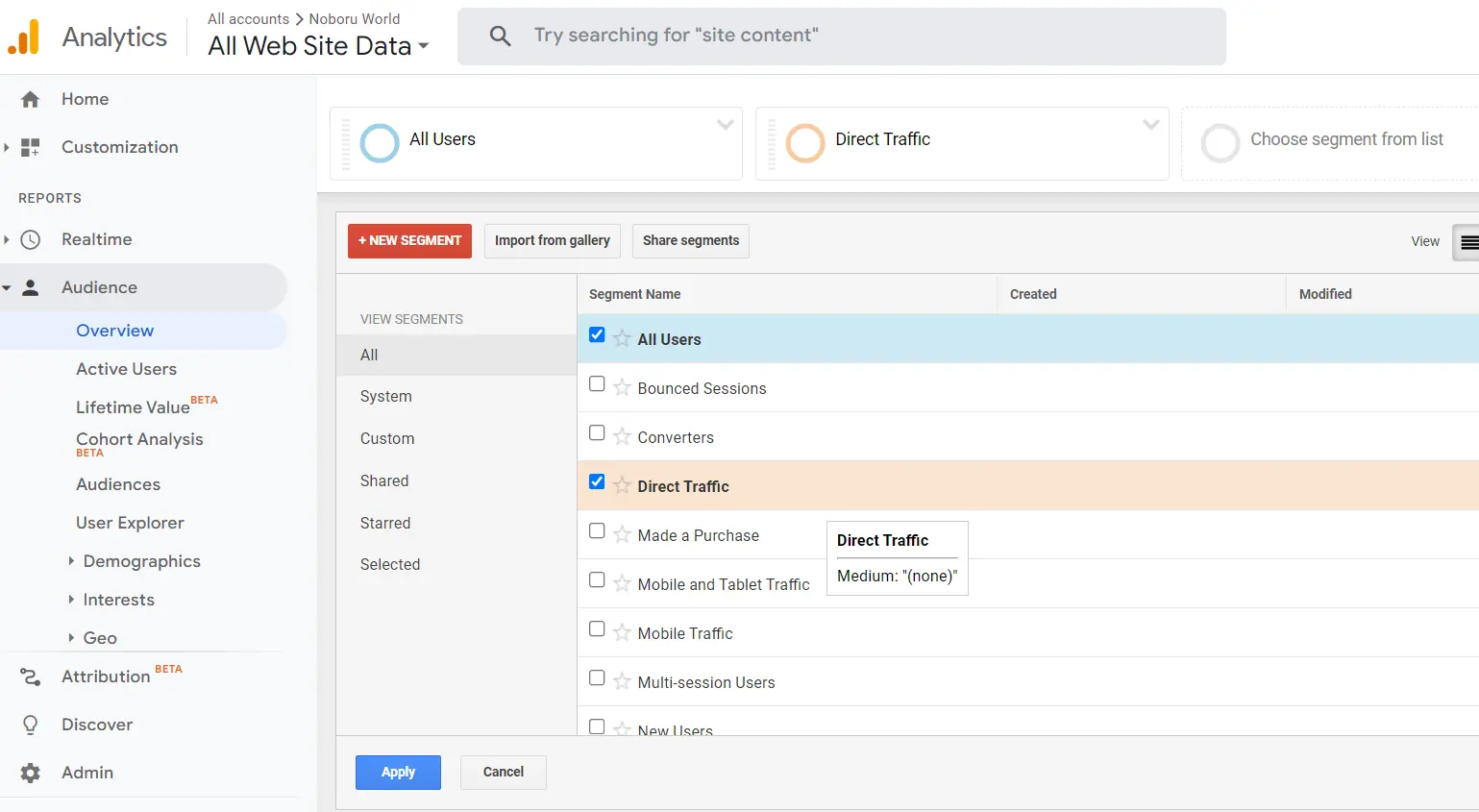
4. Referral traffic
Traffic that comes from other sources outside the website, such as external websites, social media platforms, or blogs, is known as Referral traffic. For example, if a visitor clicks on a link to a website from a different website, such as a blog post or a social media post, that visitor is considered referral traffic.
- The referral source could be a link from another website, a social media platform, or an email.
- It can provide valuable information about the websites and communities linking to and promoting the site.
- Referral sources and referral paths can provide insights into the interests and motivations of the referral traffic.
- It contributes to the diversity of a website’s traffic sources and can indicate its authority and popularity.
- This traffic should be monitored and evaluated to identify potential collaboration or partnership opportunities.
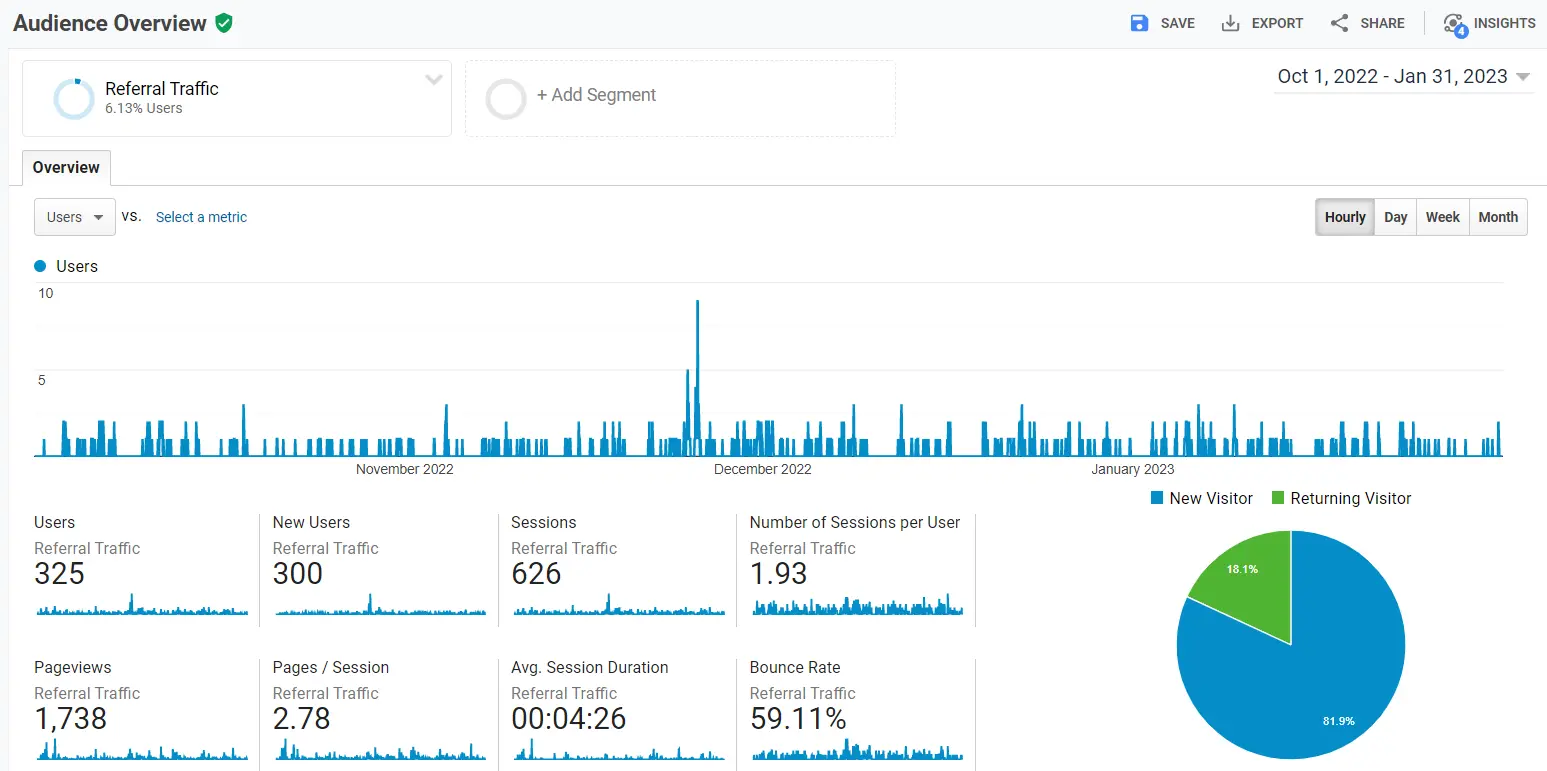
5. Social media traffic
Website visitors who arrive from social media platforms, such as Facebook, Twitter, LinkedIn or Instagram, due to clicks on links shared on these platforms.
- The traffic can be generated from organic posts, paid to advertise, or social media referrals.
- This traffic provides valuable exposure and can drive a large traffic volume to a website, especially when the content is engaging and shareable.
- It provides valuable insights into the visitors’ interests, demographics, and behaviours.
- Effective social media marketing strategies can help build brand awareness and increase the website’s reach and engagement.
- Social media traffic can complement other traffic sources and help diversify the overall traffic mix of a website.
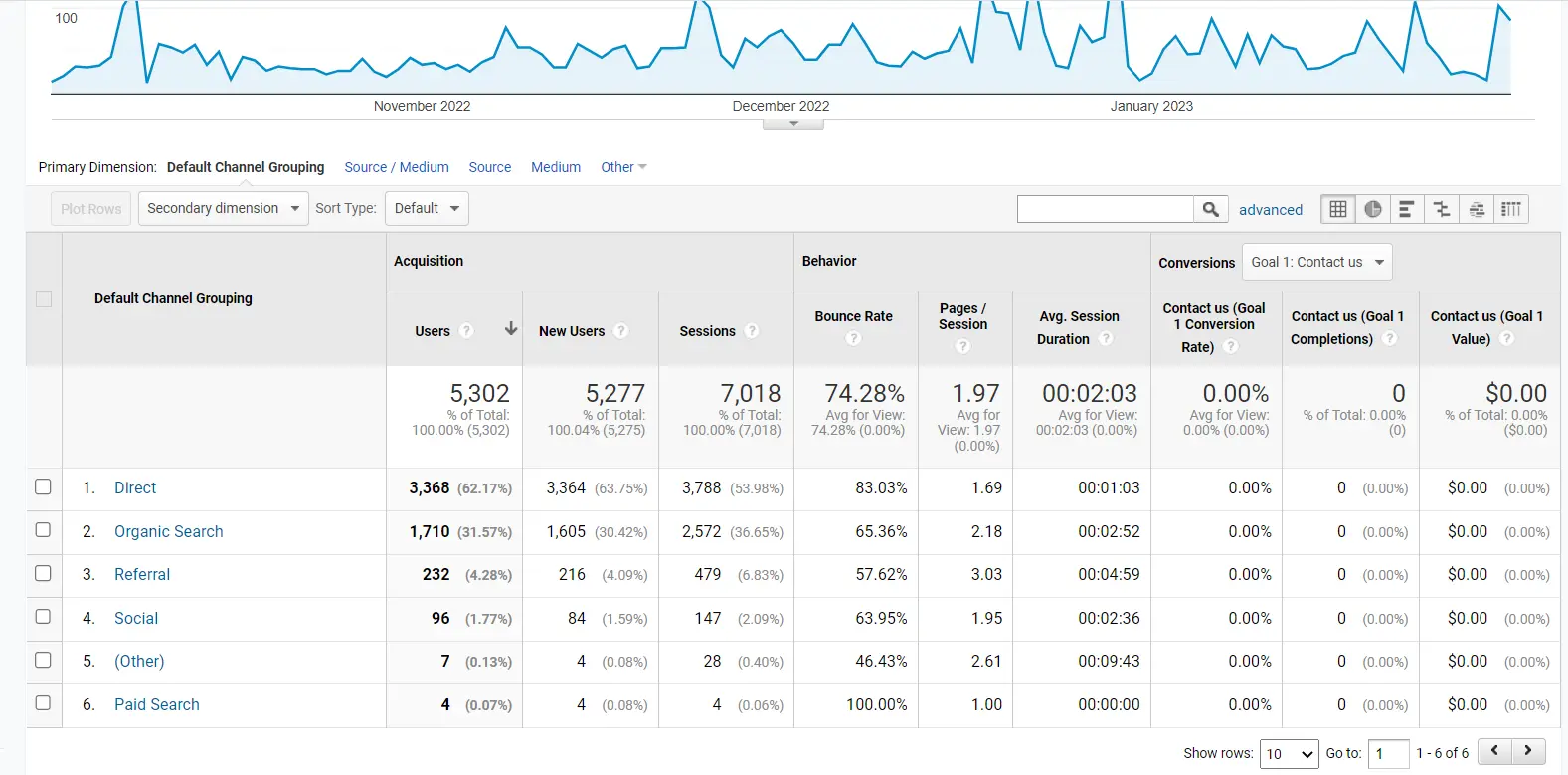
6. Email traffic
Email traffic refers to the volume of emails sent and received by a specific email account or system. Here are some key points to consider when discussing email traffic:
- Volume: Email traffic refers to the number of emails sent and received by an email account or system.
- Types of email traffic: There are several types of email traffic, including personal email, business email, promotional email, and spam.
- Sources of email traffic: Email traffic can come from various sources, including individuals, businesses, email marketing campaigns, and automated systems.
- Metrics: Email traffic is often measured using open rate, click-through rate, bounce rate, and conversion rate.
- Impact on email systems: High levels of email traffic can significantly impact email systems, potentially leading to slower performance and increased risk of downtime.
- Management: Effective email traffic management is critical for maintaining email systems’ performance and stability and ensuring that important emails are not lost or blocked as spam.
- Importance for businesses: Email traffic is an essential aspect of their communication and marketing efforts, as it allows them to reach customers, prospects, and partners with timely and relevant information.
7. Display traffic
Display website traffic is the number of visitors that a website receives and the behaviour of those visitors while they are on the site.
- It is used by website owners and marketers to evaluate the effectiveness of design and content and make improvements for increased traffic and engagement.
- Typically measured using tools such as Google Analytics to provide data such as visitor count, geographic location, pages visited, and time spent on the site.
- It provides valuable insights for the optimization and improvement of a website.
8. Referral spam
A form of spam that artificially inflates website referral traffic statistics is known as Referral spam.
- It is generated using automated scripts or bots that simulate clicks on referral links.
- The traffic is not from real users visiting the site.
- It manipulates website analytics to make it appear that the area receives more referral traffic than it actually is.
- It distorts traffic data and leads to incorrect conclusions about the website and marketing efforts.
- It can be addressed using tools such as filters in Google Analytics, IP blocking, or referral exclusion lists.
9. Bot traffic
Automated visitors, such as search engine crawlers, that access a website without a human behind the keyboard.
- Bot traffic refers to the automated requests or actions performed by software programs called bots, designed to interact with websites, mobile apps, or other digital services.
- Bots can be used for various purposes, such as indexing content for search engines, monitoring website performance, and even carrying out fraudulent activities such as click fraud or spamming.
- Bot traffic can often be identified by patterns in the data, such as high volume, rapid-fire requests, or unusual user agent strings. Therefore, website owners and digital marketers must monitor and filter out bot traffic to accurately measure website performance and user engagement.
10. Dark traffic
Traffic that can’t be traced back to its source, such as from mobile apps or encrypted browsers.
- Dark traffic refers to website or app visits that cannot be accurately attributed to a specific source or referral.
- This happens when visitors arrive at a website or app via a link that does not contain tracking parameters or when tracking parameters are lost during the referral process.
- Examples of dark traffic sources include mobile apps, instant messaging apps, and social media platforms that use encryption or redirect links.
- Dark traffic can skew analytics data and make it difficult for marketers to accurately measure the effectiveness of their campaigns.
- Strategies for reducing dark traffic include using shortened URLs with tracking parameters, implementing cross-domain tracking, and improving user experience to encourage visitors to navigate directly to a website or app.
Tools To Measure Website Traffic Growth.
1. Google Analytics
Google Analytics is a free web analytics service offered by Google that tracks and reports website traffic. It allows website owners to monitor various aspects of their website’s performance, including traffic sources, audience behavior, and conversions.
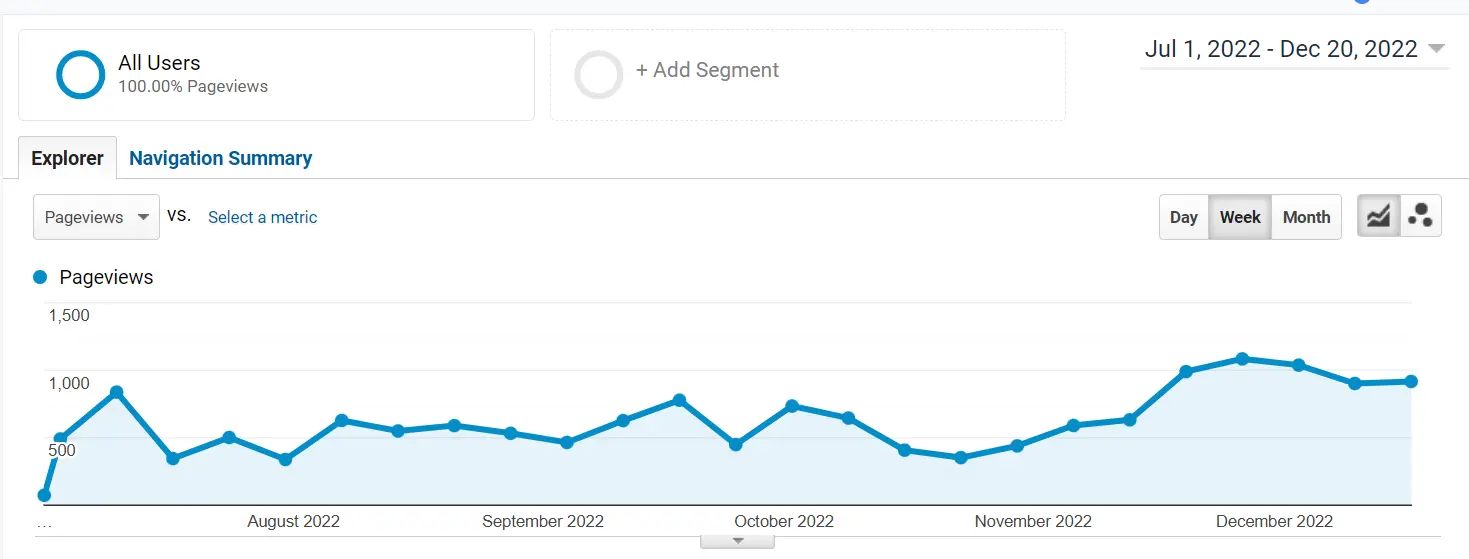
Advantages of using Google Analytics include:
- Free and easy to use: Google Analytics is free and easy to set up, making it accessible to website owners of all sizes and resources.
- Comprehensive data tracking: Google Analytics tracks a wide range of data points, including pageviews, unique visitors, bounce rate, time on site, and much more, providing a comprehensive view of website performance.
- Customizable reports: Google Analytics allows users to create custom reports that highlight the metrics that matter most to them.
- Integration with other Google tools: Google Analytics integrates with other Google tools, such as AdWords and Google Tag Manager, providing a more comprehensive view of a website’s performance.
- Real-time data: Google Analytics provides real-time data, allowing website owners to see how their website is performing in real-time.
- Mobile app: Google Analytics has a mobile app, allowing website owners to monitor their website’s performance on the go.
Overall, Google Analytics is a valuable tool for website owners looking to monitor and improve their website’s performance.
2. Ahrefs: to monitor website traffic
Ahrefs is a powerful SEO tool that helps website owners monitor their website traffic and understand their audience. It provides detailed information on organic search traffic, backlinks, keyword rankings, and much more. With Ahrefs, you can:
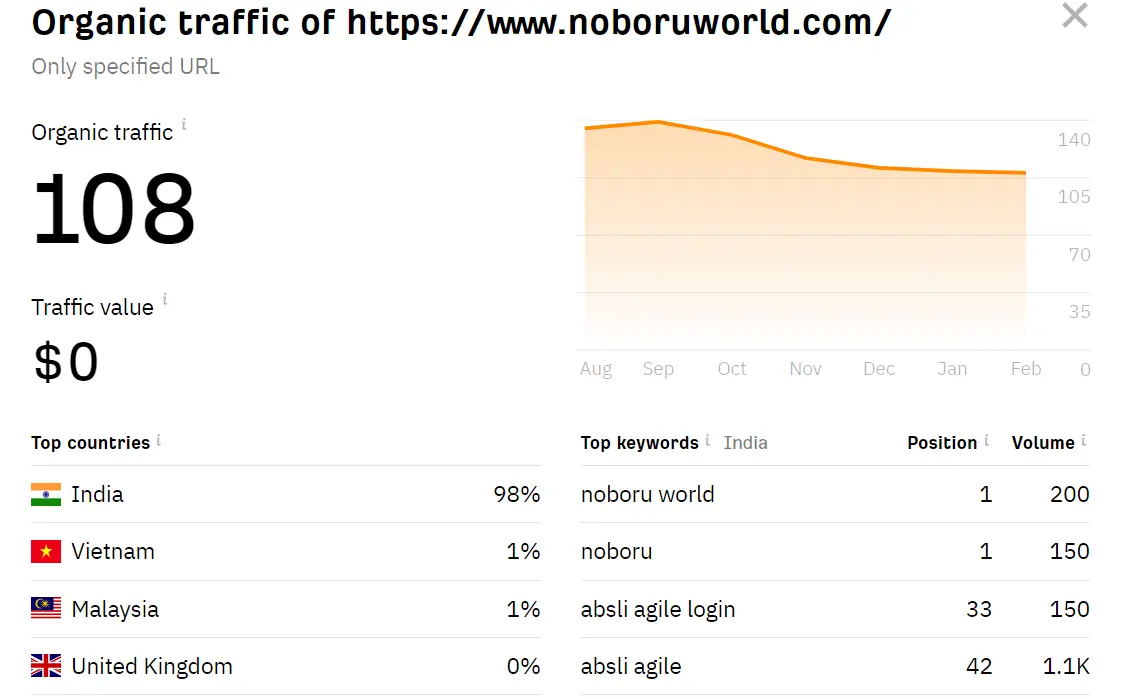
- Track organic search traffic: See how many visitors your website is receiving from search engines and which keywords are driving the most traffic.
- Analyze backlinks: Get a complete picture of your website’s backlink profile, including the number of backlinks, the quality of the links, and the domains linking to your site.
- Monitor keyword rankings: Keep track of your website’s rankings for specific keywords and see how your rankings change over time.
- Analyse competitors: See what your competitors are doing and how they compare to your website in terms of traffic and backlinks.
Advantages of using Ahrefs:
- Accurate data: Ahrefs has the largest index of live backlinks, providing accurate and up-to-date information.
- User-friendly interface: The tool is designed with user-friendly interface and provides easy-to-understand visualisations and reports.
- Comprehensive reports: Ahrefs provides a wide range of reports, including site explorer, keyword explorer, and site audit, to help you understand your website’s performance.
- Time-saving: Ahrefs automates many SEO tasks, saving you time and effort compared to manual methods.
- Affordable pricing: Ahrefs offers a range of pricing options to suit different budgets, making it accessible to both small and large businesses.
3. SEMrush: to monitor website traffic
SEMrush is a digital marketing tool that provides insights and data on search engine optimization (SEO), paid search, and display advertising. It allows website owners to monitor and improve their website’s traffic and performance.
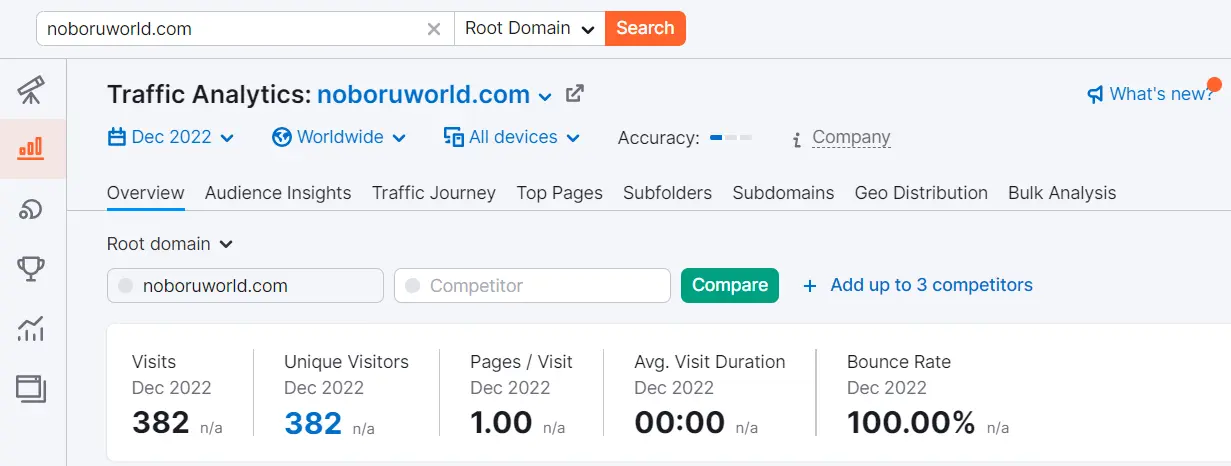
Advantages of using SEMrush include:
- Comprehensive data tracking: SEMrush tracks a wide range of data points, including keyword rankings, organic search traffic, backlinks, and much more, providing a comprehensive view of a website’s performance.
- Competitor analysis: SEMrush allows users to see how their website is performing compared to their competitors, providing valuable insights into what they can do to improve their website’s performance.
- Keyword research: SEMrush provides keyword research tools that allow users to find keywords that are relevant to their business and optimise their website for those keywords.
- Backlink analysis: SEMrush provides backlink analysis tools that allow users to see the backlinks pointing to their website and identify opportunities to improve their website’s backlink profile.
- Customizable reports: SEMrush allows users to create custom reports that highlight the metrics that matter most to them.
- Mobile app: SEMrush has a mobile app, allowing website owners to monitor their website’s performance on the go.
SEMrush is a valuable tool for website owners looking to monitor and improve their website’s traffic and performance.
4. SimilarWeb
SimilarWeb is a website analytics and market intelligence platform that helps measure website traffic. It provides insights into website traffic, including the sources of traffic, rankings, and audience demographics. By analysing large amounts of data, SimilarWeb provides a detailed view of a website’s performance and its online presence in comparison to other websites.
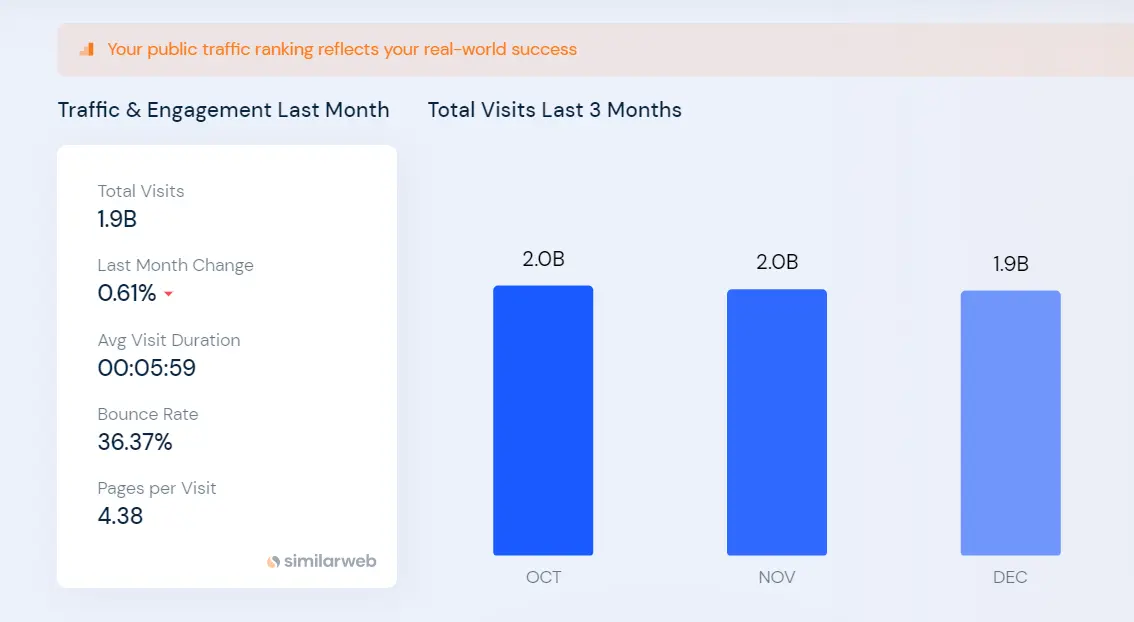
Advantages of SimilarWeb for measuring website traffic:
- Comprehensive data: SimilarWeb provides a comprehensive view of a website’s traffic sources, audience demographics, and other key metrics.
- Competitive analysis: SimilarWeb allows you to compare your website’s traffic and performance to that of your competitors, helping you understand your market position and identify areas for improvement.
- Mobile and desktop insights: SimilarWeb provides insights into both mobile and desktop traffic, allowing you to understand how your website is performing on different devices.
- Historical data: SimilarWeb provides historical data on a website’s traffic and performance, allowing you to track changes and identify trends over time.
- Integration with other tools: SimilarWeb can be integrated with other tools and platforms, allowing you to get a more comprehensive view of your website’s performance.
In conclusion, SimilarWeb is a useful tool for measuring website traffic, providing comprehensive insights and allowing for competitive analysis, making it a valuable resource for website owners and marketers.
Importance of observing website traffic growth
Observing traffic growth on your website is important for a range of reasons. As the business grows, it will be important to monitor and measure the number of visitors to your site. If new traffic growth appears to be happening in areas where it doesn’t make sense, it could be an indication that you have a broken link or that there are problems with some aspect of your website design.

Every component of your website is important. Whether you’re looking to engage with visitors and convert them into customers or score new leads, observing the traffic growth on your website helps you make sure that the different parts of your business are working together.
The presence of traffic on your website is the first key to success. If you don’t have any, you need to get one. If you do have traffic, but it isn’t converting into sales – then this is the first step towards success: getting more customers.
As your website traffic continues to grow, you may want to evaluate the site and make sure it’s performing well. Watching how many visitors are coming in and leaving, as well as how long they stay on your site will give you an idea of exactly who is viewing your page and what they like about it.
1. You can have quick fixes!
Noticing an increase or decrease in your website traffic, it’s important to investigate the reason behind it. It helps you do quick fixes to improve its performance and also find out whether there’s any problem with the website.

If you have a website and haven’t seen immediate results, it may be time to consider some changes. The best way to analyse traffic growth is to use tools like Google Analytics.
After having quick fixes:-
- You will notice if there are any changes in the site’s content or design that could affect its visitors.
- Knowing how many people visit your website every month can help you adjust your marketing efforts accordingly so they work their best for what you want them to do. For example, if you see that people aren’t coming into your store any more frequently than before or fewer people are leaving reviews for it on Yelp and Facebook, then maybe it’s time to try something new in your marketing strategy so as to bring more customers through your doors!
2. You can know the brand identity
Knowing the traffic growth on your website is important because it helps in identifying brand identity. With the increase in website traffic, it also becomes easier for you to gain more potential customers by targeting them through your website.
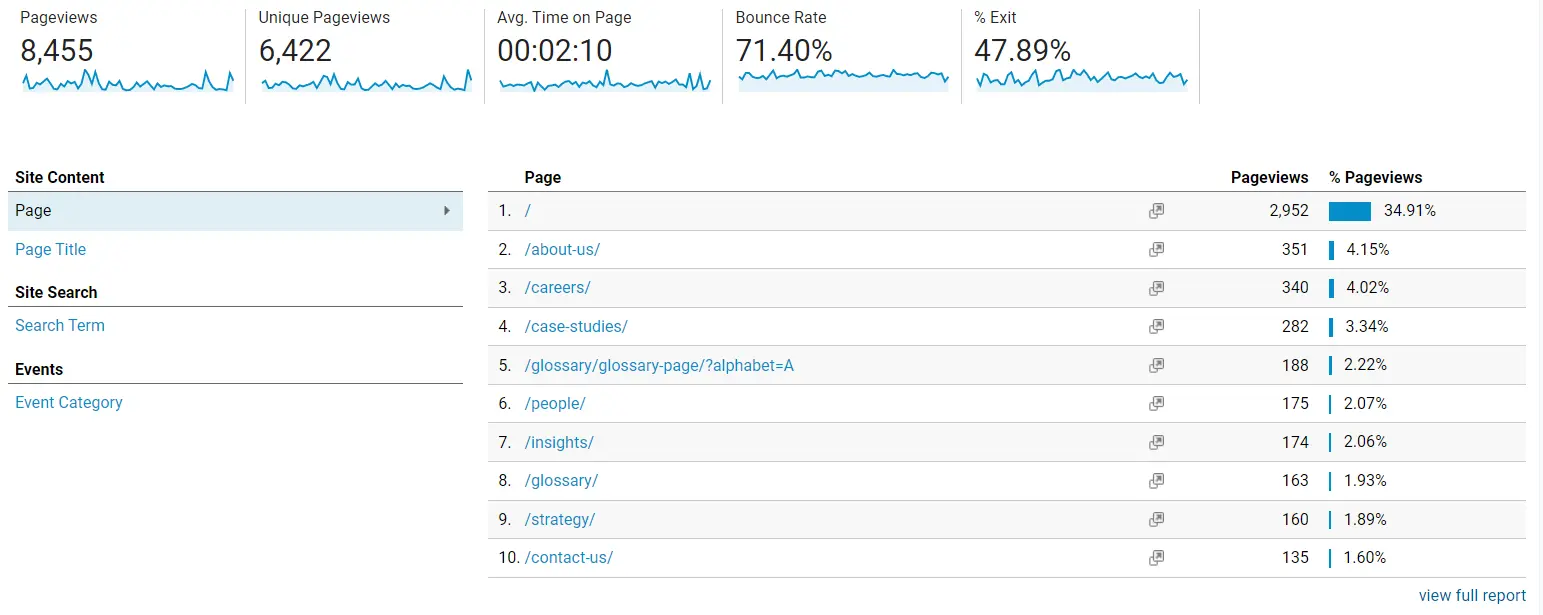
Observing traffic growth on your website is important because it helps you to understand how your brand identity is being perceived by visitors. It also gives a better picture of what aspects of your product or services may need improvement or fine tuning.
Trends observed in your stats can also help guide you when making decisions about content marketing and promotional campaigns for upcoming events or special offers.
Besides your goals and vision, traffic growth on your website is the best indicator of how well you’re doing. It shows how the brand should develop and evolve in the future to satisfy its consumers.
Website traffic is one of the most important metrics when it comes to knowing your brand identity. It helps you measure key performance indicators such as conversion rate, page views and pageviews per visitor, which can be used in advertising campaigns. The better you understand your traffic growth on a regular basis, the better decisions you can make about your marketing strategy.”
3. Focus your efforts
Focusing on the traffic growth details will help you make changes that improve your conversion rates, more quickly, with less effort.Focusing on these details will help you make changes that improve your conversion rates, more quickly, with less effort.
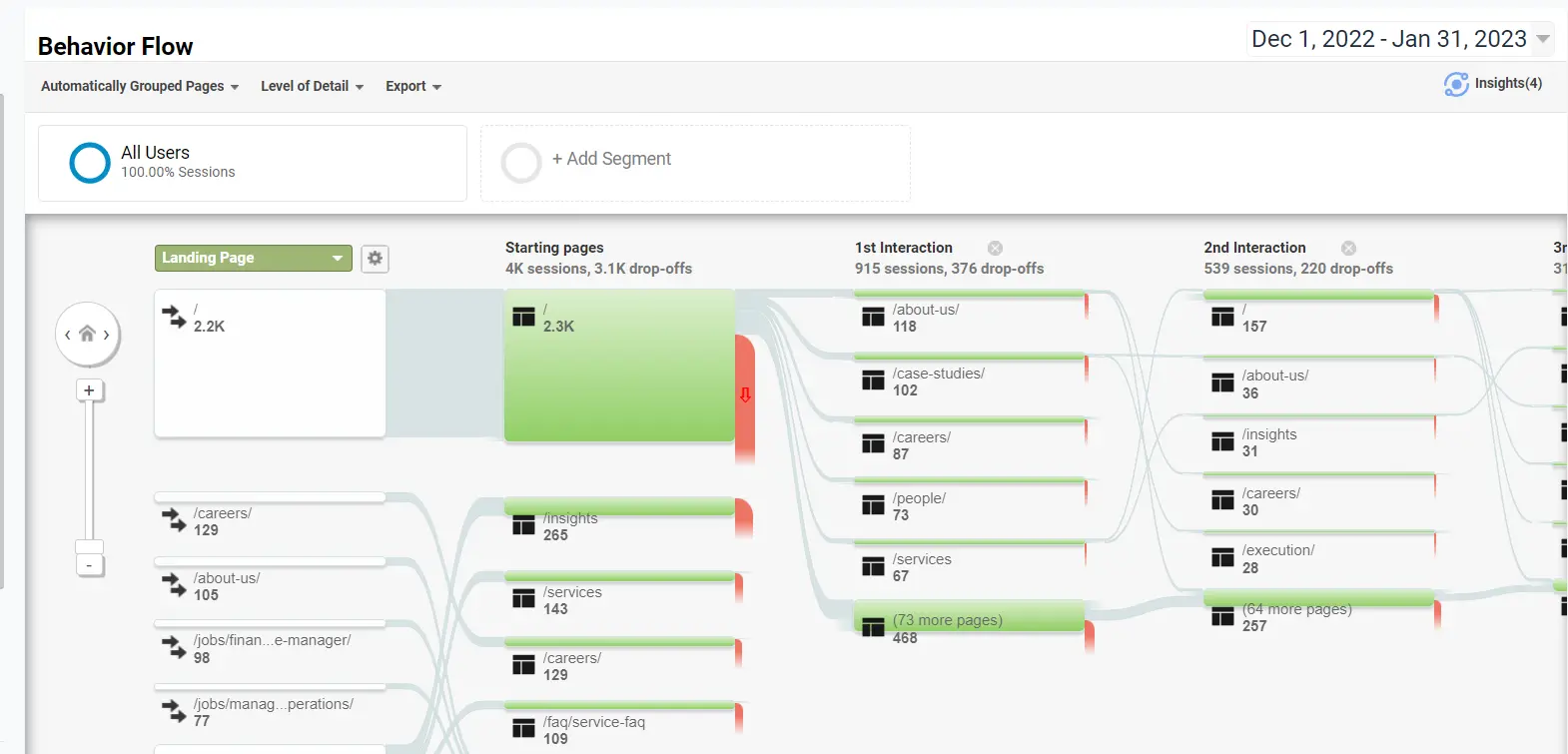
The information that comes from observing your efforts can help you set goals, measure progress and plan future changes.Observing the number of visitors to your website will help you understand how many people are coming to your site, what their profile is and what they are looking for.
In order to make any kind of impact on your business, it’s essential to understand what’s working and what isn’t. A website that has constant traffic growth is a more valuable asset than one that doesn’t.
Reports/Metrics that show website traffic and site performance
Some common website traffic and performance metrics include:
- Pageviews: number of pages viewed on the website
- Unique visitors: number of distinct individuals visiting the site
- Bounce rate: percentage of visitors who leave the site after only viewing one page
- Time on site: average amount of time spent on the site
- Conversion rate: percentage of website visitors who take a desired action (such as making a purchase)
- Acquisition sources: where website traffic is coming from (e.g. search engines, social media, referral traffic)
- Load time: how long it takes for a page to load
- Mobile traffic: percentage of website traffic from mobile devices
- Exit rate: percentage of visitors who leave the site from a specific page.
Ways to improve website traffic
Let us read ways to improve the traffic on your website:-
- Search engine optimization (SEO)
Improving the visibility of a website on search engines through optimising its content and structure for keywords relevant to its target audience.
- Content marketing
Creating valuable, relevant, and consistent content to attract and retain a target audience with the goal of driving profitable customer action.
- Social media marketing
Promoting a website through social media platforms to reach a wider audience, engage with them, and drive traffic back to the website.
- Pay-per-click advertising (PPC)
Running online ads that charge the advertiser only when a user clicks on the ad and is redirected to the website.
- Influencer marketing
Collaborating with influencers in a specific niche to reach their followers and promote a website.
- Email marketing
Building a list of email subscribers and sending them regular emails to promote the website and drive traffic.
- Guest blogging
Writing articles for other websites in the same niche and including a link back to the website.
- Affiliate marketing
Partnering with other websites or businesses to promote each other’s products or services and share the resulting traffic and revenue.
- Referral traffic
Encouraging satisfied customers or website visitors to refer others to the website.
- Improving site speed and user experience (UX)
Making sure the website loads quickly and provides a positive user experience to keep visitors engaged and reduce bounce rate.
Also Read – Guide to Freelance Digital Marketing Success 2024
Conclusion
Tracking the growth of your website traffic is crucial to understanding the success of your online presence and making informed decisions to improve it. Utilising tools such as Google Analytics, SEMrush, Ahrefs, and SimilarWeb, we help you gain a comprehensive understanding of your website’s traffic and identify areas for improvement.
Regular monitoring of your website’s key metrics such as page views, unique visitors, bounce rate, and time on site can provide you with a general overview of its performance.
Book your call here to guarantee increased traffic for your website!
By staying vigilant and continuously analysing your website traffic, we assist you with data-driven decisions to drive growth and achieve your online goals.





Comments
Wow amazing blog layout How long have you been blogging for you made blogging look easy The overall look of your web site is magnificent as well as the content
It was great seeing how much work you put into it. The picture is nice, and your writing style is stylish, but you seem to be worrying that you should be presenting the next article. I’ll almost certainly be back to read more of your work if you take care of this hike.
obviously like your website but you need to test the spelling on quite a few of your posts Several of them are rife with spelling problems and I to find it very troublesome to inform the reality on the other hand Ill certainly come back again